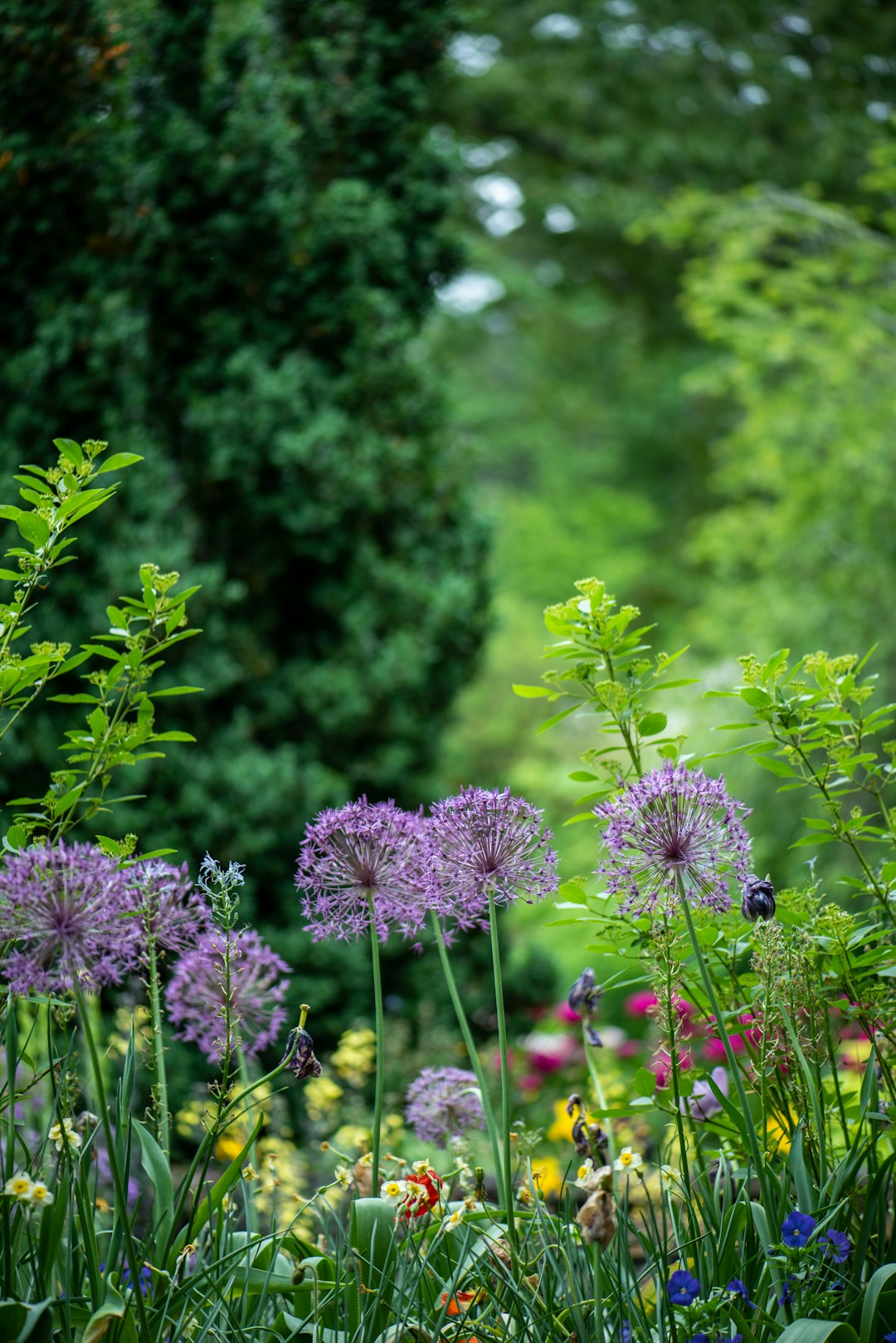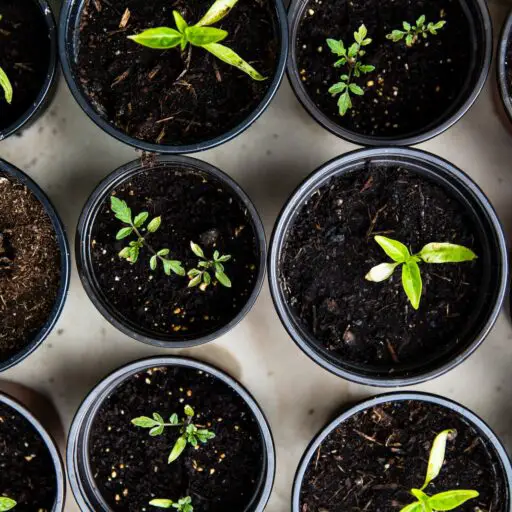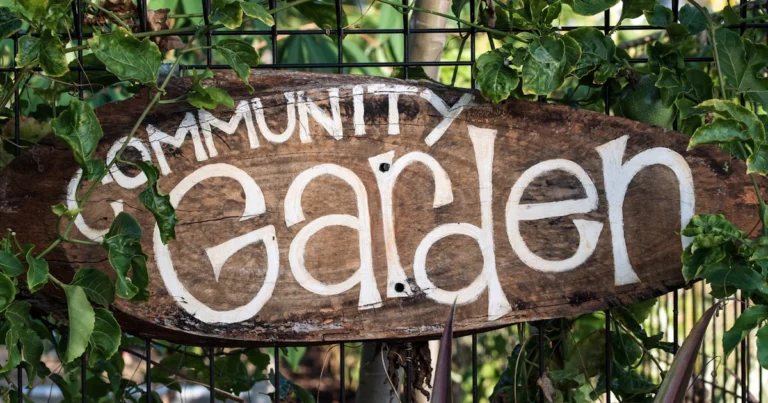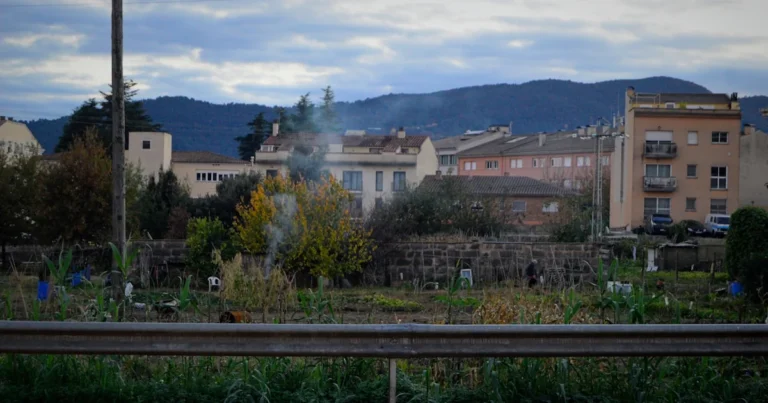Support our educational content for free when you purchase through links on our site. Learn more

Have you ever strolled past a community garden and wondered about its impact beyond the beautiful blooms and fresh veggies? Well, you’re in for a treat! 🌼 In this article, we’ll dive deep into the economic benefits of community gardens—and trust us, there’s more than meets the eye! From boosting local economies to enhancing property values, these green spaces are powerhouses of potential.
Did you know that community gardens can increase surrounding property values by up to 9.4%? 🤯 Imagine transforming a vacant lot into a thriving hub of activity, all while reaping financial rewards. Whether you’re a seasoned gardener or just curious about the green revolution, this article will equip you with insights and inspiration to harness the power of community gardens. So, let’s dig in!
Key Takeaways
- Community gardens boost local economies by increasing property values and providing fresh produce.
- They create job opportunities and foster skill development within the community.
- These gardens enhance social cohesion, making neighborhoods safer and more connected.
- Environmental benefits, such as reduced food miles and improved air quality, lead to economic gains.
- Community gardens can serve as a catalyst for local businesses, supporting farmers’ markets and local food systems.
Ready to start your own community garden or support one nearby? Check out our recommended gardening tools and supplies to get started! 🌿🛒 Shop Gardening Tools | Explore Organic Seeds
Table of Contents
- Quick Tips and Facts
- Understanding the Economic Impact of Community Gardens
- The Financial Benefits of Community Gardens for Local Economies
- Boosting Property Values Through Green Spaces
- Job Creation and Skill Development in Community Gardens
- Community Gardens as a Catalyst for Local Businesses
- Environmental Benefits Leading to Economic Gains
- Social Cohesion and Its Economic Implications
- Matching Gift Opportunities for Community Gardens
- Success Stories: How Community Gardens Transformed Neighborhoods
- All 114 Community Garden Plots Claimed: A Case Study
- Quick Guide to Starting Your Own Community Garden
- Conclusion
- Recommended Links
- FAQ
- Reference Links
Quick Tips and Facts 🌱💰
- Did you know? Community gardens can increase surrounding property values by up to 9.4% over five years! 🤯 That’s like giving your neighborhood a mini-facelift, but with more tomatoes and sunflowers! 🌻🍅
- A 10-square-foot community garden plot can yield a whopping sixfold return on investment in edible goodies! 🥕🥬 Talk about a delicious ROI!
- Community gardens aren’t just good for your plate, they’re good for the planet too! 🌎 They reduce food miles, encourage composting, and promote sustainable practices.
- Looking for a fun way to connect with your neighbors and learn new skills? Look no further than your local community garden! 🧑🤝🧑 You might even pick up some gardening tips from a seasoned pro!
What are some benefits of a community garden?
Understanding the Economic Impact of Community Gardens 🌳💵
We, at Community Gardening™, believe in the power of community gardens to transform neighborhoods, one seed at a time. But did you know that these green spaces also have a remarkable impact on local economies? It’s true! From boosting property values to creating jobs, community gardens are a recipe for economic growth.
The Financial Benefits of Community Gardens for Local Economies 💰🏘️
1. Increased Property Values: Greener Neighborhoods, Higher Returns
Remember that neighborhood park you love strolling through? Well, imagine that park producing fresh veggies and vibrant flowers! Community gardens act as mini-parks, attracting residents and businesses alike. Studies have shown that properties near green spaces, including community gardens, experience a significant increase in value. Why? Because everyone loves a little bit of nature in their backyard (or at least within walking distance!).
2. Food Savings: From Garden to Table, on a Budget
Let’s face it, grocery bills can be a real pain. But what if you could supplement your weekly shop with fresh, homegrown produce? Community gardens provide a cost-effective way to access healthy food, putting money back in your pocket. And who doesn’t love the taste of a sun-ripened tomato straight from the vine? 🍅😋
3. Investment Yields: Sowing the Seeds of Financial Growth
Think of a community garden as a small business, with each seed planted representing an investment. With a little care and attention, these investments flourish, yielding a bountiful harvest of fresh produce. This abundance translates into tangible financial benefits for both individual gardeners and the community as a whole.
Boosting Property Values Through Green Spaces 🏡🌳📈
The Green Effect: How Proximity to Nature Impacts Real Estate
It’s no secret that homes nestled near parks and green spaces command higher prices. But why? Well, it’s simple: people are naturally drawn to nature. We crave its tranquility, its beauty, and its ability to soothe our souls. Community gardens bring a touch of this natural serenity to urban environments, making nearby properties more desirable and valuable.
Case Study: The High Line, New York City
Remember that abandoned elevated railway in New York City? Well, it’s now a world-renowned park called the High Line, and it’s a prime example of how green spaces can revitalize neighborhoods. The High Line’s transformation sparked a wave of development in the surrounding area, driving up property values and attracting new businesses. While community gardens may be smaller in scale, they can have a similar positive impact on local real estate markets.
Job Creation and Skill Development in Community Gardens 🧑🌾💼🌱
From Seed to Sale: Cultivating Employment Opportunities
Community gardens are more than just places to grow food; they’re also hubs for job creation and skill development. From garden coordinators to market vendors, these green spaces offer a variety of employment opportunities, particularly for individuals facing barriers to traditional employment.
Building a Green Workforce: Skills That Grow Beyond the Garden
The skills learned in a community garden extend far beyond planting and harvesting. Gardeners develop valuable skills in teamwork, problem-solving, and entrepreneurship – skills that are highly sought after in today’s job market. These newfound skills empower individuals to pursue new opportunities and contribute to the economic vitality of their communities.
Community Gardens as a Catalyst for Local Businesses 🏪🌻🤝
From Farm to Fork: Supporting Local Food Systems
Imagine a bustling farmers’ market, overflowing with fresh, locally grown produce. Now, imagine that produce coming directly from your neighborhood community garden! Community gardens play a vital role in strengthening local food systems, providing a source of fresh ingredients for restaurants, cafes, and grocery stores. This not only supports local businesses but also reduces our reliance on industrial agriculture.
A Hub for Community Engagement: Fostering Economic Growth
Community gardens often serve as gathering places for workshops, events, and educational programs. These activities attract visitors, create a sense of community, and provide opportunities for local businesses to showcase their products and services. It’s a win-win for everyone involved!
Environmental Benefits Leading to Economic Gains 🌎💰
Reducing Food Miles: A Recipe for Economic and Environmental Sustainability
Remember that apple you bought at the grocery store? It probably traveled thousands of miles to get there, leaving a hefty carbon footprint in its wake. Community gardens help reduce our reliance on long-distance food transportation, promoting local sourcing and reducing greenhouse gas emissions. This shift towards sustainable practices not only benefits the environment but also saves money on transportation costs, making local food more affordable and accessible.
Green Infrastructure: Investing in a Sustainable Future
Community gardens act as green infrastructure, providing a range of environmental benefits that have positive economic implications. For example, gardens help mitigate stormwater runoff, reducing the strain on municipal drainage systems. They also improve air quality by absorbing pollutants and releasing oxygen. These environmental benefits translate into cost savings for cities and towns, freeing up resources for other essential services.
Social Cohesion and Its Economic Implications 🤝🏘️💰
Building Bridges, One Seed at a Time: The Power of Social Capital
Community gardens are more than just places to grow food; they’re also fertile ground for cultivating social connections. When people from diverse backgrounds come together to garden, they build relationships, share knowledge, and develop a sense of belonging. This social cohesion has tangible economic benefits, as strong communities are more resilient, adaptable, and prosperous.
Reduced Crime Rates: A Safe and Welcoming Environment for All
Remember that vacant lot that used to be an eyesore? Well, imagine it transformed into a vibrant community garden, bustling with life and laughter. Community gardens have been shown to reduce crime rates by creating a sense of ownership and pride in a neighborhood. This increased safety and security makes communities more attractive to residents and businesses alike, fostering economic growth.
Matching Gift Opportunities for Community Gardens 🎁🤝🌱
Doubling Your Impact: How Matching Gifts Can Help Your Garden Flourish
Did you know that many companies offer matching gift programs to support their employees’ charitable giving? That’s right! Your donation to a local community garden could be doubled, or even tripled, through your employer’s matching gift program. It’s a fantastic way to maximize your impact and help your favorite green space thrive.
Corporate Social Responsibility: Partnering for a Greener Future
Many businesses are actively seeking ways to give back to their communities and promote sustainability. Community gardens offer a perfect opportunity for corporate social responsibility initiatives, providing a tangible way for companies to make a difference. From sponsoring garden plots to donating tools and supplies, there are countless ways for businesses to get involved and support the growth of community gardens.
Success Stories: How Community Gardens Transformed Neighborhoods ✨
From Vacant Lots to Vibrant Green Spaces: Inspiring Tales of Transformation
Across the country, community gardens are breathing new life into neglected spaces and fostering a sense of hope and renewal. Take, for example, the Edible Schoolyard Project, which has helped transform schoolyards into thriving gardens, providing students with hands-on learning experiences and access to fresh, healthy food. These success stories demonstrate the transformative power of community gardens and their ability to create a ripple effect of positive change.
All 114 Community Garden Plots Claimed: A Case Study 🌱📈
The Sylhet Farm Story: Cultivating Success in Detroit
In the heart of Detroit, Sylhet Farm stands as a testament to the power of community gardens to revitalize neighborhoods and empower residents. In 2022, all 114 community garden plots at Sylhet Farm were claimed, with residents eager to grow their own food, connect with their neighbors, and be part of something positive. The farm’s success is a testament to the growing demand for community gardens and their ability to create a sense of ownership and pride in a community.
Quick Guide to Starting Your Own Community Garden 🧰🌱🧑🤝🧑
Ready to Dig In? Here’s How to Get Started:
- Gather Your Green Team: Connect with neighbors, community organizations, and local businesses who share your passion for gardening and community building.
- Find the Perfect Plot: Scout out potential locations, considering factors such as sunlight, water access, and accessibility.
- Develop a Plan: Outline your garden’s mission, goals, and guidelines, ensuring everyone is on the same page.
- Get Your Hands Dirty: Prepare the soil, plant your seeds, and watch your community garden flourish!
Starting a community garden is a rewarding journey that brings people together, beautifies neighborhoods, and promotes a healthier, more sustainable way of life. So, gather your gardening gloves, grab your shovels, and let’s get growing! 🌻🌱💪
Conclusion 🌟

In summary, community gardens are not just patches of green in urban landscapes; they are vibrant ecosystems that foster economic growth, social cohesion, and environmental sustainability. From increasing property values to providing fresh produce and creating jobs, the benefits of community gardens are manifold. They serve as a catalyst for local economies, transforming neighborhoods and enhancing the quality of life for residents.
While there are challenges in establishing and maintaining these gardens, the positives far outweigh the negatives. The sense of community, the access to fresh food, and the environmental benefits make community gardens a worthy investment for any neighborhood. So, if you’re considering starting or supporting a community garden, we wholeheartedly recommend diving in! 🌱💚
Recommended Links 🛒
-
Books on Community Gardening:
-
Garden Supplies and Tools:
FAQ ❓

How do community gardens impact local food systems and economies?
Community gardens enhance local food systems by providing fresh, healthy produce directly to residents, especially in food deserts. They reduce reliance on industrial agriculture and long-distance food transportation, thereby lowering food costs and carbon footprints. Economically, they stimulate local economies by creating jobs, supporting local businesses, and increasing property values.
Read more about “What is the Power of Community Gardens? 20 Transformative Benefits 🌱 …”
What are the social benefits of participating in a community garden?
Participating in a community garden fosters social connections and builds a sense of community. Gardeners often form friendships, share knowledge, and collaborate on projects, leading to increased social cohesion. This interaction can improve mental health, reduce feelings of isolation, and create a supportive network for individuals and families.
Read more about “The Fascinating History of Community Gardens 🌱”
Can community gardens help reduce urban poverty and improve public health?
Absolutely! Community gardens provide access to fresh produce, which can help alleviate food insecurity and improve nutrition among low-income families. By offering a space for physical activity and social interaction, they also contribute to better mental and physical health outcomes. Furthermore, the skills learned in community gardens can empower individuals to pursue job opportunities, thus addressing urban poverty.
How do community gardens contribute to environmental sustainability and conservation?
Community gardens play a crucial role in promoting environmental sustainability. They improve air and soil quality, reduce stormwater runoff, and encourage biodiversity. By promoting local food production, they also minimize food miles and greenhouse gas emissions. Additionally, many community gardens incorporate composting practices, which help reduce waste and promote a circular economy.
Read more about “What is a Community Garden? 10 Inspiring Benefits & Ideas 🌱 …”
What are the benefits of community gardens for children and families?
Community gardens provide educational opportunities for children, teaching them about nutrition, ecology, and the importance of sustainable practices. Families can bond over gardening activities, fostering teamwork and responsibility. Moreover, gardens serve as safe spaces for children to play and explore, enhancing their overall well-being.





